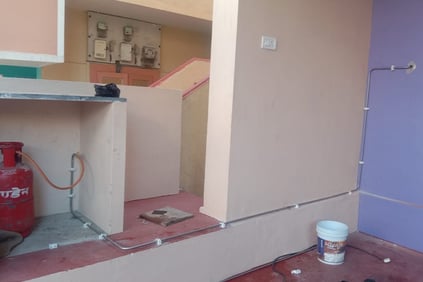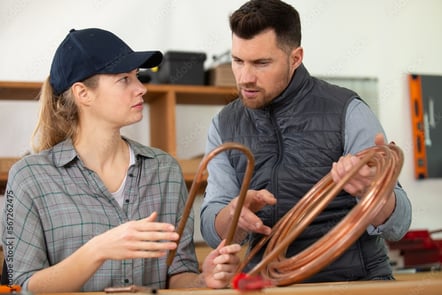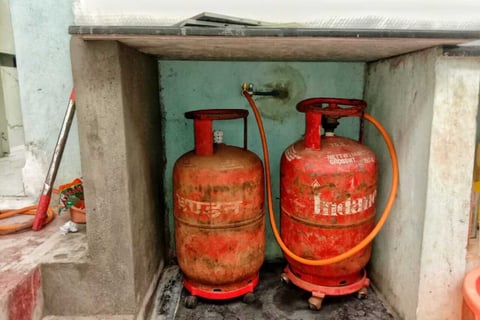What is Domestic Gas Pipeline Installation?
LPG domestic gas pipeline installation is a valuable investment that offers efficiency, cost savings, and convenience for homeowners.
In a world where convenience and efficiency are paramount, LPG (liquefied petroleum gas) domestic gas pipeline installation stands out as a smart choice for homeowners. If you’re contemplating this upgrade or simply curious about how it works, this guide will provide you with a clear understanding of what LPG domestic gas pipeline installation involves, its benefits, the installation process, and essential considerations
Understanding LPG Domestic Gas Pipeline Installation
LPG Domestic Gas Pipeline Installation involves setting up a system of pipes to distribute liquefied petroleum gas (LPG) throughout your home. LPG, which is a mix of propane and butane, is used for various household needs such as cooking, heating, and hot water. A gas pipeline system ensures a steady and reliable supply of LPG to your appliances, enhancing comfort and efficiency in your daily life.
Why Choose LPG for Your Home?
Efficiency and Performance: LPG (Liquified Petroleum Gas) is known for its high energy content, which means it burns efficiently and provides consistent heat. This makes it an excellent choice for cooking and heating, as LPG appliances often perform better and heat up faster compared to electric ones.
Cost-Effectiveness: In many places, LPG (Liquified Petroleum Gas) can be more affordable than electricity, especially for heating and cooking. By installing an LPG gas pipeline, you can reduce your energy bills and enjoy cost savings over time.
Environmental Benefits: LPG (Liquified Petroleum Gas) is a cleaner-burning fuel compared to other fossil fuels like coal and oil. It produces fewer emissions and contributes less to air pollution, making it a more environmentally friendly option.
Convenience: With an LPG (Liquified Petroleum Gas) pipeline system, you no longer need to manage bulky gas cylinders. The pipeline provides a continuous supply of gas, eliminating the inconvenience of running out of gas and having to replace cylinders.
How Does LPG Gas Pipeline Installation Work?
The process of installing an LPG (Liquified Petroleum Gas) pipeline system in your home involves several key steps:
Initial Consultation and Planning:
Site Assessment: A professional installer will start by assessing your home to determine the best layout for the LPG (Liquified Petroleum Gas) pipeline. This includes identifying the optimal location for the LPG storage tank, pipe routing, and connection points for various appliances.
Permits and Regulations: Before installation begins, you’ll need to obtain the necessary permits and ensure compliance with local building codes and safety regulations. This step is crucial for ensuring that the installation meets all legal requirements and safety standards.
Pipe Installation:
Choosing Materials: LPG gas pipelines are typically made from durable materials like copper, steel, or flexible plastic. The choice of material will depend on factors such as local regulations, the layout of your home, and the specific needs of your installation.
Laying the Pipes: The installation involves running pipes through walls, ceilings, and floors to connect the LPG (Liquified Petroleum Gas) storage tank to your home’s appliances. The pipes are carefully routed to ensure minimal disruption to your home’s structure and to avoid interference with other utilities.
Connecting Appliances:
Appliance Hookup: Once the pipes are installed, they are connected to your LPG-powered appliances, such as stoves, heaters, and water boilers. This ensures that each appliance receives a steady and reliable supply of gas.
Safety Checks: Each connection is tested to ensure that it is secure and leak-free. This step is critical for preventing potential gas leaks and ensuring the safety of your home.
Testing and Inspection:
System Testing: After installation, the entire pipeline system is tested for leaks and pressure. This involves using pressure gauges and other testing equipment to ensure that the system is operating correctly and safely.
Final Inspection: A certified inspector will review the installation to confirm that it meets all safety standards and building codes. This final check is essential for ensuring that the system is both safe and compliant with regulations.
Key Considerations Before Installation
Hiring a Qualified Professional:
Expertise and Certification: LPG (Liquified Petroleum Gas) pipeline installation requires specialized knowledge and skills. It’s important to hire a licensed and experienced professional who is certified to work with LPG systems. They will ensure that the installation is performed safely and according to industry standards.
Understanding Costs:
Installation Expenses: The cost of installing an LPG pipeline can vary depending on factors such as the size of the system, the complexity of the installation, and the materials used. It’s a good idea to get multiple quotes and discuss costs with your installer before starting the project.
Ongoing Maintenance: In addition to the initial installation cost, consider the long-term maintenance of your LPG gas pipeline installation system. Regular inspections and maintenance are necessary to keep the system in good working condition and prevent potential issues.
Compliance with Local Regulations:
Safety Standards: LPG (Liquified Petroleum Gas) installations must adhere to strict safety standards to prevent leaks, explosions, and other hazards. Verify that your installer follows these standards and conducts thorough safety checks.
Maintenance and Safety:
Regular Inspections: Schedule regular inspections of your LPG pipeline system to detect and address any potential issues early. Regular maintenance helps prolong the life of your system and ensures its safe operation.
Emergency Procedures: Familiarize yourself with emergency procedures in case of a gas leak or other issues. Knowing how to respond quickly and safely is essential for protecting yourself and your family.
Benefits of Professional Installation
While it may be tempting to consider a DIY approach, professional gas pipeline installation offers several significant advantages:
Expertise: Professional installers have the expertise and experience needed to handle complex LPG installations safely and efficiently. They are trained to navigate potential challenges and ensure that the system is installed correctly.
Safety: Gas Pipeline installations involve significant safety risks, and professionals are well-versed in managing these risks. They follow strict safety protocols to prevent accidents and ensure that the installation meets all safety standards.
Compliance: Professional Technicians are familiar with local regulations and building codes, ensuring that your installation complies with all legal requirements. This helps avoid potential legal issues and ensures that your system operates safely.
Warranty and Support: Many Gas Pipeline professional installation services offer warranties and ongoing support. If any issues arise after installation, you have access to expert assistance and repairs, providing additional peace of mind.
Conclusion
LPG domestic gas pipeline installation is a valuable investment that offers efficiency, cost savings, and convenience for homeowners. By understanding the process, considering key factors, and working with qualified professionals, you can ensure a smooth installation and enjoy the benefits of a reliable LPG system in your home.
If you’re contemplating an LPG pipeline installation or have any questions, don’t hesitate to reach out to a certified professional. They can guide you through the process, answer your questions, and help you make informed decisions for your home.
For more details or to schedule a consultation, contact us today.
FOR MORE INFO CALL US +918522092525








